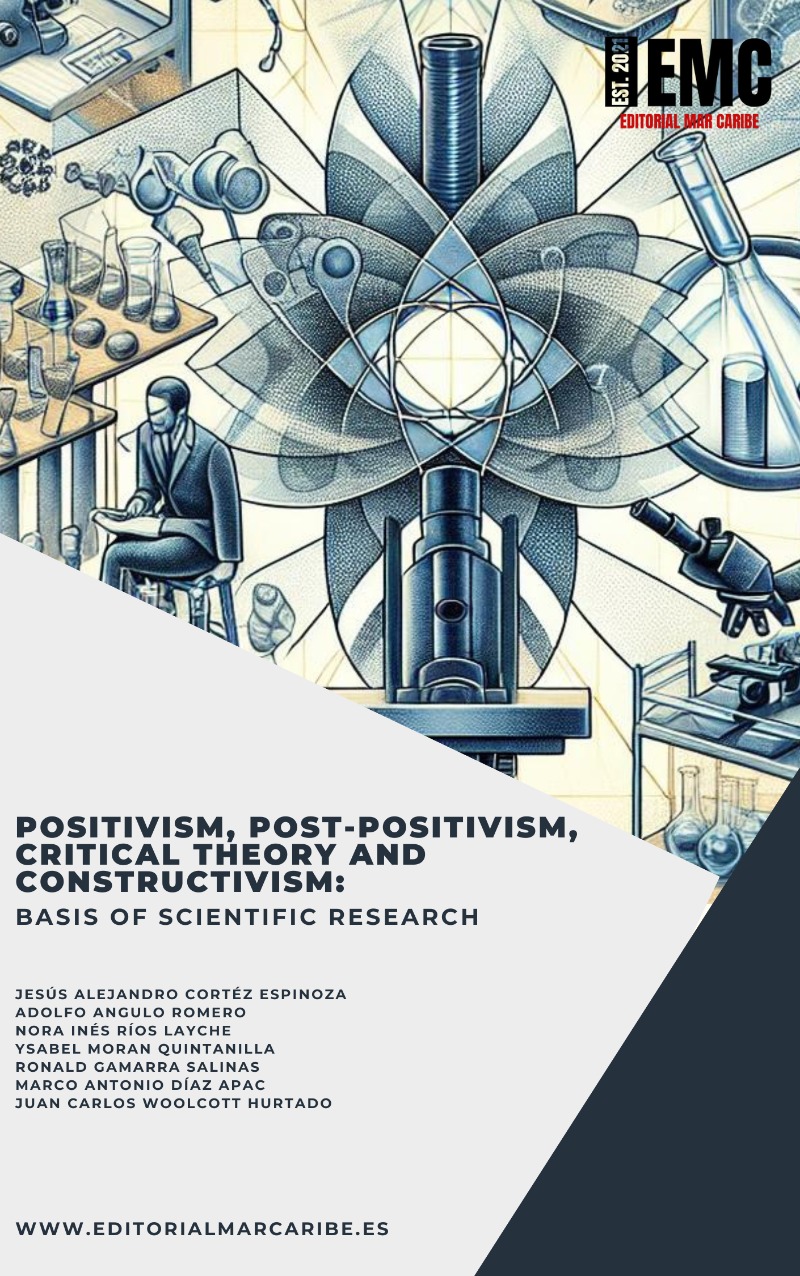
Positivism, post-positivism, critical theory and constructivism: Basis of scientific research
Angulo Romero, Adolfo
Ríos Layche, Nora Inés
Moran Quintanilla, Ysabel
Gamarra Salinas, Ronald
Díaz Apac, Marco Antonio
Woolcott Hurtado, Juan Carlos
Editorial:Editorial Mar Caribe
Materia:Investigación
Clasificación:Métodos de investigación: generalidades
Público objetivo:Profesional / académico
Publicado:2025-04-03
Número de edición:1
Número de páginas:0
Tamaño:5Mb
Precio:$870
Soporte:Digital
Formato:Pdf (.pdf)
Idioma:Inglés
Libros relacionados
Ruralidad y educación en Río Negro - Podkidaylo, Milton
Investigación social y métodos de muestreo - Chotón Calvo, Mariel Del Rocío; Fernández Villarroel, Roger Álvaro; Saldaña Miranda, Marcela Yvone; Villa Santillan, María Silvia; Gonzales Llontop, Luis Felipe; Paredes Acuña, Álvaro Ulises
Por los tiempos de Mujica - Villalba, Fernando
La conspiración masónica - Amado, Fernando
Reseña
Postmodernism, poststructuralism, and deconstructivism are key movements challenging traditional frameworks in modern intellectual discourse. These theories have significantly influenced philosophy, literature, art, and architecture by questioning established conventions and certainties.
Postmodernism, rooted in the socio-political turmoil of the mid-20th century, signifies a shift away from the overarching narratives and ideologies characteristic of modernism. Rather than pursuing universal truths, postmodernism celebrates diversity, fragmentation, and uncertainty. This movement promotes an examination of the subjective aspects of reality, underscoring how context and perspective influence comprehension.
Poststructuralism, which is associated with postmodernism, arose as a critique of structuralism's focus on fixed meanings and binary oppositions. Influential thinkers like Jacques Derrida, Michel Foucault, and Roland Barthes have scrutinized the stability of language and meaning, showing that interpretation is perpetually contingent, fluid, and affected by power dynamics. Poststructuralism encourages a more profound analysis of texts and cultural objects, highlighting the relationship between language, identity, and social frameworks.
Deconstructivism, primarily linked to architecture, is significantly influenced by the philosophical foundations of poststructuralism. This movement aims to challenge traditional forms and aesthetic standards, advocating for a design philosophy that accepts chaos, complexity, and contradiction. By dismantling and reinterpreting existing structures, architects and artists create environments and works that defy viewer expectations and stimulate new ways of perception and understanding.
Collectively, these three movements establish a triadic relationship that transforms our engagement with culture, aesthetics, and knowledge. Grasping their interconnections offers a thorough framework for exploring the intricacies of contemporary thought and artistic expression, revealing how ideas develop and influence one another across various disciplines. As we explore each concept more deeply, we will unveil their historical backgrounds, essential characteristics, and the significant effects they have had on modern discourse.




